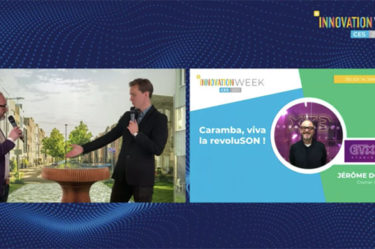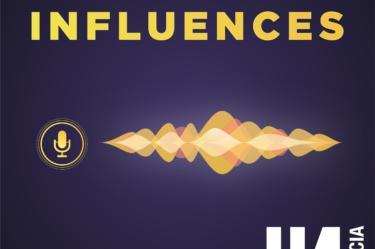1) AI, a powerful tool to save you time
AI’s advantages are varied and bring significant value to content creation. For starters, AI stands out for its unique ability to generate ideas and insights. With its learning and data processing capabilities, it can analyze information from various sources to come up with creative and inspiring suggestions. This ability to generate innovative ideas is invaluable to marketing professionals, writers and content creators looking for inspiration and original concepts. According to Yoomweb, 91.5% of leading companies are investing in AI on an ongoing basis.
Moreover, artificial intelligence is a powerful tool. It is able to automatically generate texts, articles, and even scripts, using sophisticated algorithms. These AIs can reproduce various visuals and adapt to specific tones, allowing for the production of diversified content for various audiences. This automation of the creative process saves considerable time and frees creators to focus on more strategic tasks.
Lastly, content optimization is another major benefit of artificial intelligence. AIs can analyze the performance of existing content by taking into account parameters such as engagement, conversion rate or user feedback. Based on this information, they can make recommendations and adjustments to improve the effectiveness of the content. This can include suggestions for SEO optimization, improving content structure or adjusting tone or style to better meet user expectations.
Among the most useful, here are examples of AI to boost its content:
- CHAT GPT, for content generation.
- Midjourney, for photo generation.
- ElevenLabs, specialized in voice cloning.
- Copy.AI, the ancestor of Chat GPT and specialized in text generation.
- Bethoven.AI, specialized in music generation by AI.
2) Short videos, an effective way to engage your target audience
Content is constantly evolving, and the use of short videos, such as Reels or TikToks, is proving to be an effective strategy to showcase your content. This concise and impactful format quickly grabs your audience’s attention by offering them a visual and interactive experience. By using it, you can encourage engagement and active participation from your audience by using features such as polls or Q&As. These videos also allow you to quickly convey key information and communicate powerful messages. By leveraging these formats, you create engaging experiences that stand out and captivate your audience, building brand awareness.
In recent years, short videos have become extremely popular and influential in the digital landscape, due to their format that perfectly matches users’ limited attention span and rapid content consumption. For example, the Chinese platform TikTok offers challenges and trends that can generate viral engagement and increase the visibility of brands’ content. By leveraging these interactive videos, you create a stronger connection with your audience, boost their participation and strengthen your online presence. Nearly 80% of consumers say TikTok helped them discover a new brand or product. In the UK, 82% of people say they have made a purchase after seeing a product featured on social media.
3) Gamification, a fun way to improve your content
Gamification is an approach to integrating playful elements into non-gaming contexts such as business, education and health, in order to foster user motivation, engagement and learning. It can take many forms, such as badges, milestones, rewards and rankings, which provide users with incentives to achieve their goals and progress along their journey.
Aussi appelée ludification, elle peut s’avérer bénéfique tant dans les relations B2B que B2C et peut être appliquée dans divers domaines tels que la formation, le marketing ou la gestion de projet. Par exemple, dans le domaine de la formation, elle peut être utilisée pour rendre l’apprentissage plus divertissant et captivant, en incitant les apprenants à relever des défis et à obtenir des récompenses. D’après Zippia, 30 % des employés affirment que l’apprentissage basé sur le jeu est plus engageant et la gamification augmenterait la productivité de 90% des travailleurs.
Gamification can be beneficial in both B2B and B2C relationships and can be applied in various fields such as training, marketing or project management. For example, in training, it can be used to make learning more entertaining by engaging learners in challenges and rewards. According to Zippia, 30% of employees say game-based learning is more engaging, and gamification reportedly increases productivity by 90%.
4) UGC, or how to rely on your community to better communicate
User-generated content (UGC) are creations such as videos, photos, opinions and comments, which come from the users themselves. They have a significant influence on the perception of brands and products by consumers. Recommendations and reviews from consumers are often considered more credible than advertisements and brand messages.
UGC can be used in a variety of contexts, including marketing, advertising, market research and online reputation management. Brands can leverage UGC to engage their audience and establish meaningful interactions with users. They can also build visibility and brand awareness online by allowing users to share their positive experiences with products and services.
However, the use of UGC can be challenging for brands, especially with regard to monitoring and moderation. Brands must be prepared to handle negative comments and reviews, while ensuring the quality and relevance of user-generated content. Adding UGC certainly makes the brand more authentic and according to Meetanshi, 75% of marketers believe in this strategy.
5) Synthetic voice, or how to bring written content to life quickly
Synthetic voice is a technological innovation that emulates the human voice. Often referred to as “Text-to-speech”, this method makes it possible to transform any written text into an audio file. Whether it’s to meet accessibility needs, such as audio announcements in public transportation, or to add a voice to videos or even video games, artificial vocalization has many varied applications.
Converting text into audio files generated by artificial voices offers several advantages:
- Considerable time savings, as the transformation to audio takes only a few seconds;
- The possibility of rapid adaptation in several languages
- The optimization of resources, since audio production with human voices is more expensive and subject to specific rights.
Digital voices offer the ability to customize each piece of content to meet specific needs. Brands can select voices that reflect the appropriate tones and styles of their advertising message. In addition, synthetic voices can be adjusted based on the demographics of targeted consumers, allowing brands to create more relevant and effective ads. They also ensure a consistent sound identity across all audio ads, guaranteeing a seamless experience for listeners.
At ETX, we’ve carefully selected the best performing synthetic voices on the market and enhanced them with our enriched lexicon. This technology allows companies to easily convert their texts into audio and video content with just a few clicks. The applications range from website accessibility to audio newsletters, and from business intelligence to internal communications in audio format, which is especially useful in mobile situations.
We use our text-to-speech technology to transform the websites of media, brands and institutions such as Le Figaro, La Tribune, Le Point, Orange, the French Senate and many others. Feel free to test our text-to-speech solutions or contact us to learn more about our technology.






